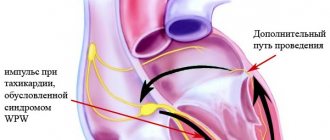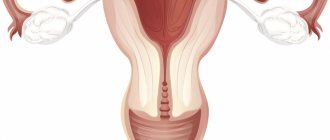Klinefelter syndrome is a genetic disease characterized by an additional female sex chromosome X (one or even several) in the male karyotype XY . At the same time, insufficient sex hormones are produced in the male gonads - the testicles.
As you know, the human genetic set has 46 chromosomes, of which 22 pairs are called somatic, and the 23rd pair is called sexual.
Women have a pair of sex chromosomes XX , and men have XY . Klinefelter syndrome requires the presence of a male Y chromosome, so despite the additional X chromosomes, patients are always male.
Classification: types of karyotypes in Klinefelter syndrome
Based on the number of additional X chromosomes, the following variants of Klinefelter syndrome are distinguished:
- 47,XXY - the most common
- 48,ХХХY
- 49,XXXXY
In addition, Klinefelter syndrome also includes male karyotypes that include, in addition to additional X chromosomes, an additional Y chromosome - 48,XXYY . And finally, among patients with this syndrome there are individuals with a mosaic karyotype 46,XY / 47,XXY (that is, some of the cells have a normal chromosome set).
History of the discovery of the syndrome
The syndrome got its name in honor of Harry Klinefelter, a doctor who first described the clinical picture of the disease in 1942. Klinefelter and colleagues published a study of 9 men with common symptoms such as low body hair, eunuchoid body type, tall stature, and small testicles. Later, in 1956, geneticists Plunkett and Barr (E.R. Plunkett, M.L. Barr) discovered sex chromatin bodies in the nuclei of cells of the oral mucosa in men with Klinefelter syndrome, and in 1959 Polanyi and Ford (P.E. Polanyi, SE Ford) and colleagues showed that patients have an extra X chromosome in their chromosome set.
Active research into this pathology was conducted in the 70s in the USA. Then all newborn boys were subjected to karyotyping, as a result of which it was possible to reliably identify the prevalence and genetic characteristics of Klinefelter syndrome.
Interestingly, mice can also have XXY sex chromosome trisomy, making them useful models for studying Klinefelter syndrome.
Diagnostic measures
Prenatal diagnosis
Invasive prenatal diagnosis and subsequent karyotyping allow the correct diagnosis to be made.
There are two methods by which you can obtain material for research:
- A chorionic villus biopsy is performed from 9.5 to 12 weeks of pregnancy.
- Amniocentesis - from 16 to 18 weeks.
Each of these methods can detect chromosomal abnormalities with up to 99% accuracy.
During diagnostic surgery, fetal tissue is obtained from which the DNA of the unborn child is extracted. In the laboratory, genetic material is examined for the presence of chromosomal pathologies.
- During a biopsy, specialists pierce the anterior abdominal wall of a pregnant woman with a puncture needle and remove chorionic villi from the placenta. The procedure is controlled by an ultrasound machine.
- Amniocentesis is the collection of amniotic fluid containing genetic information. A special needle is inserted into the uterine cavity under the control of an ultrasound machine sensor and amniotic fluid is collected.
Postnatal diagnosis
Diagnosis of genetic diseases in the postnatal period is carried out by endocrinologists, andrologists and geneticists.
Specialists begin their work by collecting complaints, life history and illness. They find out: the time of onset of symptoms, their changes, cases of genetic diseases in the family and in the next generation. Then they move on to a visual inspection, palpation, percussion and auscultation if necessary. The meager clinical picture of Klinefelter syndrome does not always allow timely diagnosis of the pathology and initiation of hormone replacement therapy. The diagnostic sign of the disease are Barr bodies, which are found in the cells of the oral mucosa.
Karyotype examination allows a definitive diagnosis to be made. Karyotyping is performed on all infertile men with gynecomastia and boys with mental retardation.
Additional diagnostic methods:
- Ultrasound examination of the scrotum allows you to determine the size and structure of the testicles.
- Ultrasound examination of the heart is performed to detect congenital defects.
- Densitometry is a method for detecting osteoporosis.
- Determination of sex hormones in the blood - testosterone, FSH and LH.
- Spermogram is an analysis of ejaculate carried out to determine a man’s fertility, the presence of sexual diseases, the number and activity of sperm. Individuals with Klinefelter syndrome experience a decrease in the number or complete absence of sperm in the ejaculate.
- Testicular biopsy reveals the state of spermatogenesis and has great diagnostic value.
Prevalence of the disease
Klinefelter syndrome is one of the most common genetic diseases: for every 500 newborn boys, there is 1 child with this pathology.
In addition, Klinefelter syndrome is the third most common endocrine pathology in men (after diabetes mellitus and thyroid pathology) and the most common cause of congenital reproductive dysfunction in men.
To date, about half of cases of Klinefelter syndrome remain unrecognized. Often such patients seek help for infertility, erectile dysfunction, gynecomastia, osteoporosis, anemia, etc. without a previously established diagnosis.
Etiology and causes of the disorder
Klinefelter syndrome is a genetic disease that is not inherited because patients, with rare exceptions, are infertile. Pathology, as a rule, occurs as a result of a violation of chromosome divergence in the early stages of the formation of eggs and sperm. At the same time, Klinefelter syndrome, which occurs due to a disorder in female reproductive cells, occurs three times more often. Mosaic forms are caused by pathology of cell division in the early stages of embryogenesis, therefore some of the cells in such patients have a normal karyotype. The reasons for nondisjunction of sex chromosomes and disruption of cell division at the earliest stages of embryogenesis are still poorly understood. Unlike other chromosomal diseases, the effect of parental age is absent or only slightly expressed.
Forecast
If the manifestations of Klinefelter syndrome are mild, there are no changes in the intellectual sphere, and there are no serious consequences, then the prognosis is favorable. With timely treatment and correction of possible complications, patients can live a full life.
If Klinefelter's symptoms are more pronounced and there are mental disorders and serious chronic conditions, then the prognosis noticeably worsens. In such patients, treatment should be comprehensive, including not only medication, but psychocorrection and rehabilitation.
Severe concomitant diseases of internal organs lead to early mortality and disability.
Lack of testosterone leads to spontaneous fractures and acute heart problems, such as myocardial infarction.
Early signs
Unlike most diseases associated with a violation of the number of chromosomes, the intrauterine development of children with Klinefelter syndrome proceeds normally, and there is no tendency to premature termination of pregnancy. So in infancy and early childhood it is almost impossible to suspect pathology. Moreover, clinical signs of classic Klinefelter syndrome usually appear only in adolescence. However, there are symptoms that suggest the presence of Klinefelter syndrome in the prepubertal period:
- high growth (peak height increase occurs between 5–8 years);
- long legs (disproportionate physique);
- high waist.
Some patients experience some delay in speech development.
In adolescence, the syndrome often manifests itself as gynecomastia, which with this pathology has the appearance of bilateral symmetrical painless enlargement of the mammary glands. Since this type of gynecomastia is often observed in completely healthy adolescents, this symptom often goes unnoticed. Normally, teenage gynecomastia disappears without a trace within several years, but in patients with Klinefelter syndrome, reverse involution of the mammary glands does not occur. In some cases, gynecomastia may not develop at all, and then the pathology manifests itself as signs of androgen deficiency already in the postpubertal period.
Dispensary observation
Clinical observation is carried out throughout life by an endocrinologist and other specialists as necessary.
In childhood, observation is carried out by a pediatrician. In the first year of life, the frequency of examinations is 1 time per month (as in healthy children). Then the number is reduced to 1 time every 3 months.
As the child grows up, an endocrinologist joins the observation. Since such children develop endocrine problems.
In adults, if there are no complaints, examinations can be carried out once a year.
In addition, additional studies are prescribed:
- clinical blood test;
- blood biochemistry;
- Ultrasound of the abdominal organs;
- Ultrasound of the penis and testicles;
- general urine analysis;
- ECG or ultrasound of the heart.
Specialist consultations are carried out. And special attention is paid to consultations with a cardiologist, urologist, reproductive specialist, and psychotherapist.
Symptoms of androgen deficiency in Klinefelter syndrome
Androgen deficiency in Klinefelter syndrome is associated with gradual testicular atrophy, which leads to decreased testosterone synthesis. The degree of androgen deficiency varies dramatically.
First of all, the external signs of hypogonadism attract attention:
- scanty facial hair or its complete absence;
- female-pattern pubic hair growth;
- there is no hair on the chest or other parts of the body;
- small volume of the testicles (2–4 ml) and their dense consistency (pathognomonic sign).
Since degeneration of the gonads, as a rule, develops in the postpubertal period, in most patients the size of the male genital organs, with the exception of the testicles, corresponds to age norms.
Patients may complain of weakened libido and decreased potency. Many men with Klinefelter syndrome do not experience sexual desire at all, while some, on the contrary, start a family and live a normal sex life. The most constant sign of pathology is infertility; it is this that most often becomes the reason for such patients to consult a doctor. 10% of men with azoospemia have Klinefelter syndrome.
All patients with spermatogenesis disorders must have their karyotype determined to exclude or confirm the diagnosis of Klinefelter syndrome.
Androgen deficiency leads to the development of osteoporosis, anemia and skeletal muscle weakness. In a third of patients, varicose veins of the legs can be observed.
Androgens affect metabolism, so patients with Klinefelter syndrome are prone to obesity, impaired glucose tolerance and type 2 diabetes.
The predisposition of such patients to autoimmune diseases (rheumatoid arthritis, systemic lupus erythematosus, autoimmune thyroid diseases and others) has been proven.
Links[edit]
- ^ abcdefg "What are the common symptoms of Klinefelter syndrome (KS)?" . Eunice Kennedy Shriver National Institute of Child Health and Human Development. 2013-10-25. Archived from the original on April 2, 2015. Retrieved March 15, 2015.
- "Klinefelter Syndrome". rarediseases.info.nih.gov
. Archived from the original on April 15, 2021. Retrieved April 15, 2019. - ^ abcd "Klinefelter syndrome (KS): An overview". nichd.nih.gov
. Eunice Kennedy Shriver National Institute of Child Health and Human Development. 2013-11-15. Archived from the original on March 18, 2015. Retrieved March 15, 2015. - ^ abcde "How many people are at risk for Klinefelter syndrome (KS)?" . Eunice Kennedy Shriver National Institute of Child Health and Human Development. 2012-11-30. Archived from the original on March 17, 2015. Retrieved March 15, 2015.
- ^ abcd "How do healthcare providers diagnose Klinefelter syndrome (KS)?" . Eunice Kennedy Shriver National Institute of Child Health and Human Development. 2012-11-30. Archived from the original on March 17, 2015. Retrieved March 15, 2015.
- ^ abcde "How to treat the symptoms of Klinefelter syndrome (KS)?" . Eunice Kennedy Shriver National Institute of Child Health and Human Development. 2013-10-25. Archived from the original on March 15, 2015. Retrieved March 15, 2015.
- ^ abc "Is there a cure for Klinefelter syndrome (KS)?" . Eunice Kennedy Shriver National Institute of Child Health and Human Development. 2012-11-30. Archived from the original on March 17, 2015. Retrieved March 16, 2015.
- ^ ab "Klinefelter Syndrome". A Home Guide to Genetics
. National Library of Medicine. 2012-10-30. Archived from the original on November 15, 2012. Retrieved November 2, 2012. - ^ abcd Wysotsak J, Graham JM (October 2006). "Klinefelter syndrome and aneuploidies of other sex chromosomes". Journal "Orphanet of Rare Diseases"
.
1
: 42. DOI: 10.1186/1750-1172-1-42. PMC 1634840. PMID 17062147. - "Klinefelter Syndrome". Mayo Clinic. Archived from the original on September 8, 2020. Retrieved August 27, 2021.
- ^ abc Kanakis GA, Nishlag E (September 2021). "Klinefelter's syndrome: more than hypogonadism." Metabolism
.
86
: 135–144. DOI: 10.1016/j.metabol.2017.09.017. PMID 29382506. - Brinton L.A. (June 2011). "Risk of breast cancer in patients with Klinefelter syndrome". Acta Paediatrica
.
100
(6):814–8. DOI: 10.1111/j.1651-2227.2010.02131.x. PMC 4024394. PMID 21241366. - "Klinefelter syndrome (KS): information about the condition". nichd.nih.gov
. 2013-11-15. Archived from the original on March 18, 2015. Retrieved March 15, 2015. - ^ ab Odom, Samuel L. (2009). Handbook of developmental disabilities (Pbk. Ed.). New York: Guilford. item 113. ISBN 9781606232484. Archived September 10, 2021. Retrieved September 2, 2017.
- Conn, P. Michael (2013). Animal models for the study of human disease (First ed.). San Diego: Elsevier Science & Technology Books. item 780. ISBN 9780124159129. Archived September 10, 2017. Retrieved September 2, 2021.
- "Klinefelter syndrome: basics of practice, pathophysiology, epidemiology". 2020-04-27. Cite journal requires |journal= (help)
- ^ abcde "Klinefelter syndrome". Eunice Kennedy Shriver National Institute of Child Health and Human Development. 2007-05-24. Archived from the original on November 27, 2012.
- "47, XXY (Klinefelter syndrome)". University of Utah. Archived from the original on July 30, 2014. Retrieved June 15, 2014.
- ^ ab Klinefelter HF (September 1986). "Klinefelter syndrome: historical background and development." Southern Medical Journal
.
79
(9):1089–93. DOI: 10.1097/00007611-198609000-00012. PMID 3529433. - ↑
Bock, Robert (August 1993).
"Understanding Klinefelter Syndrome: A Guide for XXY Men and Their Families". NIH Pub. No. 93-3202
. Eunice Kennedy Shriver National Institute of Child Health and Human Development. Archived from the original on January 4, 2021. Retrieved April 7, 2007. - Denschlag D, Tempfer C, Kunze M, Wolff G, Keck C (October 2004). "Assisted reproductive technologies in patients with Klinefelter syndrome: a critical review." Fertility and infertility
.
82
(4):775–9. DOI: 10.1016/j.fertnstert.2003.09.085. PMID 15482743. - “What are the treatments for the symptoms of Klinefelter syndrome (KS)?” . nichd.nih.gov/
. Archived from the original on July 9, 2021. Retrieved July 14, 2021. - ^ ab Leask, Catherine (October 2005). "Klinefelter Syndrome". National Library of Health, Specialty Libraries, Clinical Genetics
. National Library of Health. Archived from the original on 2007-09-27. Retrieved April 7, 2007. - Astwood, E. B. (2013-10-22). Recent progress in hormone research: Proceedings of the 1967 Laurentian hormone conference. Academic press. ISBN 9781483223308. Archived October 11, 2020. Retrieved October 2, 2021.
- "Klinefelter syndrome: XXY men". Archived from the original on August 24, 2017. Retrieved July 1, 2021.
- Smith CM, Bremner WJ (June 1998). "Klinefelter Syndrome". Archives of Internal Medicine
.
158
(12):1309–14. DOI: 10.1001/archinte.158.12.1309. PMID 9645824. - Hultborn R, Hanson C, Köpf I, Verbiené I, Warnhammar E, Weimarck A (November-December 1997). "Prevalence of Klinefelter syndrome in men with breast cancer". Anticancer Research
.
17
(6D): 4293–7. PMID 9494523. - Graham YM, Bashir AS, Stark RE, Silbert A, Walzer S (June 1988). “Oral and written language abilities of XXY boys: Implications for proactive management.” Pediatrics
.
81
(6):795–806. PMID 3368277. - Boone KB, Swerdloff RS, Miller BL, Geschwind DH, Razani J, Lee A, et al (May 2001). "Neuropsychological profiles of adults with Klinefelter syndrome." Journal of the International Neuropsychological Society
.
7
(4): 446–56. DOI: 10.1017/S1355617701744013. PMID 11396547. - Samango-Sprouse C (December 2010). "Expanding the phenotypic profile of the young child with XXY." Pediatric Endocrinology Reviews
. 8 Supplement 1: 160–8. PMID 21217608. - Link, Genetics Home. "Klinefelter Syndrome". A Home Guide to Genetics
. Archived from the original on January 30, 2021. Retrieved July 14, 2020. - ^ ab Bojesen A, Juul S, Gravholt CH (February 2003). "Prenatal and postnatal prevalence of Klinefelter syndrome: a national registry study". Journal of Clinical Endocrinology and Metabolism
.
88
(2):622–6. DOI: 10.1210/jc.2002-021491. PMID 12574191. - Tüttelmann F, Gromoll J (June 2010). "New genetic aspects of Klinefelter syndrome". Molecular human reproduction
.
16
(6): 386–95. DOI: 10.1093/molehr/gaq019. PMID 20228051. - "Klinefelter Syndrome - Pattern of Inheritance". NIH - A Home Guide to Genetics
. US NATIONAL INSTITUTES OF HEALTH. Archived from the original on January 30, 2021. Retrieved January 27, 2021. - Chow JC, Yen Z, Ziesche SM, Brown CJ (2005). "The Silence of the Mammalian X Chromosome". Annual Review of Genomics and Human Genetics
.
6
: 69–92. DOI: 10.1146/annurev.genom.6.080604.162350. PMID 16124854. - ↑
Blaschke RJ, Rappold G (June 2006).
"Pseudoautosomal regions, SHOX and disease". Current Opinion in Genetics and Development
.
16
(3): 233–9. DOI: 10.1016/j.gde.2006.04.004. PMID 16650979. - Jump up
↑ Linden MG, Bender BG, Robinson A (October 1995).
"Tetrasomy and pentasomy of sex chromosomes." Pediatrics
.
96
(4 Pt 1): 672–82. PMID 7567329. - ^ ab Samplaski, Mary K.; and others. (April 2014). "Phenotypic differences in Klinefelter mosaic patients compared with non-mosaic Klinefelter patients". Fertility and infertility
.
101
(4):950–955. DOI: 10.1016/j.fertnstert.2013.12.051. PMID 24502895. Archived from the original on October 11, 2021. Retrieved June 13, 2020. - Velissariou V, Christopoulou S, Karadimas S, Pihos I, Kanaka-Gantenbein S, Kapranos N, et al. (2006). "Rare XXY/XX mosaicism in a phenotypic male with Klinefelter syndrome: a case report." European Journal of Medical Genetics
.
49
(4): 331–7. DOI: 10.1016/j.ejmg.2005.09.001. PMID 16829354. - Centerwall WR, Benirschke K (September 1975). "Animal model of Klinefelter syndrome XXY in humans: male tortoiseshell and calico." American Journal of Veterinary Research
.
36
(9): 1275–80. PMID 1163864. - Kamischke A, Baumgardt A, Horst J, Nieschlag E (January-February 2003). "Clinical and diagnostic features of patients with suspected Klinefelter syndrome." Journal of Andrology
.
24
(1): 41–8. PMID 12514081. - Nieschlag E (May 2013). "Klinefelter's syndrome: the most common form of hypogonadism, but often overlooked or untreated". Deutsches Ärzteblatt International
.
110
(20): 347–53. DOI: 10.3238/arztebl.2013.0347. PMC 3674537. PMID 23825486. - Abramsky L, Chapple J (April 1997). "47,XXY (Klinefelter syndrome) and 47,XYY: assessment scores and indications for postpartum diagnosis with implications for prenatal counseling." Prenatal diagnosis
.
17
(4): 363–8. DOI:10.1002/(SICI)1097-0223(199704)17:4 <363::AID-PD79>3.0.CO; 2-O. PMID 9160389. - ^ ab Groth KA, Skakkebk A, Høst C, Gravholt CH, Bojesen A (January 2013). "Clinical Review: Klinefelter Syndrome - Clinical Update". Journal of Clinical Endocrinology and Metabolism
.
98
(1):20–30. DOI: 10.1210/jc.2012-2382. PMID 23118429. - Jump up
↑ Gabriele R, Borghese M, Conte M, Egidi F (2002).
“[Clinical and therapeutic features of gynecomastia].” Il Giornale di Chirurgia
(in Italian).
23
(6–7): 250–2. PMID 12422780. - Harold Chen. "Klinefelter Syndrome - Treatment". medscape.com. Archived from the original on July 2, 2012. Retrieved September 4, 2012.
- Corona G, Pizzocaro A, Lanfranco J, Garolla A, Pelliccione J, Vignozzi L, et al. (May 2017). "Sperm recovery and ICSI outcomes in Klinefelter syndrome: a systematic review and meta-analysis". Human Reproduction Update
.
23
(3):265–275. DOI: 10.1093/humupd/dmx008. PMID 28379559. - Jump up
↑ Fullerton G, Hamilton M, Maheshwari A (March 2010).
“Should men with non-mosaic Klinefelter syndrome be considered infertile in 2009?” . Human reproduction
.
25
(3):588–97. DOI: 10.1093/humrep/dep431. PMID 20085911. - Bojesen A, Juul S, Birkebaek N, Gravholt CH (August 2004). "Increased mortality in Klinefelter syndrome". Journal of Clinical Endocrinology and Metabolism
.
89
(8):3830–4. DOI: 10.1210/jc.2004-0777. PMID 15292313. - Swerdlow AJ, Higgins CD, Shoemaker MJ, Wright AF, Jacobs PA (December 2005). "Mortality in patients with Klinefelter syndrome in the UK: a cohort study". Journal of Clinical Endocrinology and Metabolism
.
90
(12):6516–22. DOI: 10.1210/jc.2005-1077. PMID 16204366. - Jump up
↑ Jacobs PA (1979).
"Risks of recurrence of chromosomal abnormalities." Birth defects.
Series of original articles .
15
(5C): 71–80. PMID 526617. - ↑
Maclean N, Harnden DG, Court Brown WM (August 1961).
"Anomalies in the structure of sex chromosomes in newborns." Lancet
.
2
(7199): 406–8. DOI: 10.1016/S0140-6736(61)92486-2. PMID 13764957. - Visootsak J, Aylstock M, Graham JM (December 2001). "Klinefelter Syndrome and Its Variants: An Update and Review for the Primary Pediatrician." Clinical Pediatrics
.
40
(12): 639–51. Doi: 10.1177/000992280104001201. PMID 11771918. S2CID 43040200. - Matlach J, Grehn R, T KLINK (January 2012). "Klinefelter's syndrome associated with goniodysgenesis". Journal of Glaucoma
.
22
(5): e7-8. DOI: 10.1097/IJG.0b013e31824477ef. PMID 22274665. S2CID 30565002. - ↑
Klinefelter HF Jr;
Reifenstein EC Jr; Albright, F. (1942). "A syndrome characterized by gynecomastia, aspermatogenesis without alpha-leydigism and increased excretion of follicle-stimulating hormone." Journal of Clinical Endocrinology and Metabolism
.
2
(11): 615–624. DOI: 10.1210/jcem-2-11-615. - Klinefelter-Reifenstein-Albright syndrome. Archived August 27, 2021, in the Wayback Machine at biomedsearch.com, retrieved August 26, 2021.
- ^ ab Jacobs PA, Strong JA (January 1959). "A case of human intersexuality having a possible XXY sex determination mechanism." Nature
.
183
(4657):302–3. Bibcode: 1959Natur.183..302J. DOI: 10.1038/183302a0. PMID 13632697. S2CID 38349997. - Jump up
↑ Jacobs PA (September 1982).
"Address of the William Allan Memorial Prize: Human Population Cytogenetics: The First Twenty-Five Years". American Journal of Human Genetics
.
34
(5): 689–98. PMC 1685430. PMID 6751075. - Koymasky, Matt & Andrej (May 17, 2003). "GLTB Famous: Lili Elba". HistoryVSHollywood.com
.
Archived from the original on October 10, 2007. Retrieved February 2, 2021. Adapted from Brown, Kay (1997); Aldrich R. and Wotherspoon G., Who's Who in Gay and Lesbian History, from Antiquity to the Second World War
, Routledge, London, 2001. [
better source needed
] - "Biography of Lili Elba". Biography.com
. A&E Television Networks. Retrieved December 11, 2015. - ↑
Timothy Stanley (October 12, 2012).
"Who was John Randolph?" . Theamericanconservative.com
. Retrieved March 23, 2015. [A] post-mortem examination of Randolph... recorded that "the scrotum was almost undeveloped" and only the right testicle was "the size of a bean." - Cossey, Caroline (1991). My history
. London: Faber and Faber. ISBN 0-571-16251-7. - Edgren, Gretchen (September 1991). "Tula's Transformation (Transsexual Caroline Cossey)". Playboy
.
38
(9): 102. Archived from the original on December 6, 2004. - Abgrall, Jean-Francois; Lure, Samuel (2010). Inside the Mind of a Killer
. Translated by Ros Schwartz. Profile books. p. 227. ISBN 9781847651051. - James, Kimber [@BustyKimber] (March 14, 2012). “12, I was born with Klinefelter syndrome. So I've always been a little different. RT @ faridayasser100: ..." (Twitter) - via Twitter.
- "KimberBarbieXXX: 12, I was born". tmi.me. Archived from the original on April 26, 2012. Retrieved March 17, 2012.
- Ramsland, Catherine. "Shame and the Serial Killer: The Impact of Humiliation on Criminal Behavior Requires More Attention". Psychology Today
. Retrieved September 13, 2021. - Fewster, Sean (September 22, 2014). "Mark Errin Rust, who killed Megumi Suzuki and Maja Dzekic, will ask the South African Supreme Court to grant him a non-parole period". Adelaide Advertiser
. Retrieved July 9, 2021. - “Pedro Spayari melhora desempenho após descobrir doença rara” [Pedro Spayari improves performance after discovery of rare disease]. Estadão
(in Portuguese). August 24, 2021. Retrieved August 10, 2019. - “ഇന്റര് സെക്സും ട്രാന്സ്ജെന്ന്ററും ഒന്നല്ല; രണ്ടാണ്" [Intersex and transsexuals are not one in the same; Two]. aksharamonline.com
(in Malayalam). Archived from the original on February 23, 2021. Retrieved February 23, 2021 .CS1 maint: unfit URL (link)
Psychological characteristics
The IQ of patients with classic Klinefelter syndrome varies from below average to well above average. However, in all cases there is a disproportion between the general level of intelligence and verbal abilities, so that patients with a fairly high IQ often experience difficulties in perceiving large volumes of material by ear, as well as in constructing phrases containing complex grammatical structures. Such features cause patients a lot of trouble during the training period and often continue to affect their professional activities.
Data on the psychological characteristics of patients with Klinefelter syndrome are quite contradictory, but most experts assess patients as modest, timid people with somewhat low self-esteem and increased sensitivity. There is evidence that patients with Klinefelter syndrome are prone to homosexuality, alcoholism and drug addiction. It is difficult to say whether the mental characteristics of such patients are caused by the direct influence of a chromosomal abnormality, or whether it is a reaction to problems in the sexual sphere.
With regard to different cytogenetic variants of Klinefelter syndrome, the rule is true that with an increase in the number of additional X chromosomes, the number and severity of pathological symptoms increases.
Classification
Normally, a human karyotype contains 46 chromosomes. It distinguishes between the sex chromosomes X - chromosome (female) and Y - chromosome (male).
In healthy men, the karyotype has both chromosomes. In Klinefelter syndrome, the karyotype contains additional female sex chromosomes.
Extra female sex chromosomes have a great impact on the condition of the body with Klinefelter syndrome. The mutation suppresses testosterone levels, reducing its concentration, leading to pathologies of the reproductive system.
Chromosome combinations vary in patients with Klinefelter syndrome. The karyotype can be of several types:
- 47 XXY;
- 48 XXYY;
- 48 XXXY;
- 49 XXXYY;
- 49 XXXXYY;
- 47 XXY (mosaicism).
| Karyotype options | Peculiarities |
| 47 XXY | Like all forms of Klinefelter syndrome, they are accompanied by infertility, a “female” body structure, underdevelopment of the genital organs, and minor mental disorders. |
| 48 XXYY | Mental retardation is weakly expressed. Features of the body structure (long arms, disproportionate body type), underdevelopment of the penis, testicles, gynecomastia come to the fore. |
| 48 XXXY | Characterized by moderate changes in the mental sphere. Mental retardation is mild, there is a delay in speech and motor function, accompanied by aggression and low self-esteem. |
| 49 XXXYY | It manifests as moderate to severe mental retardation. Accompanied by malformations of the body. |
| 49 XXXXYY | One of the severe forms, accompanied by severe mental disorders and abnormal development of the genital organs. Mental retardation is pronounced. Various malformations of internal organs and concomitant diseases are observed. Manifested by severe testosterone deficiency. |
| 47 XY (mosaic shape) | Reproductive function is preserved, they can have children, spermatogenesis is not impaired. This variant of Klinefelter syndrome is asymptomatic; a person may not suspect that he has the disease for the rest of his life. |
Diagnosis of Klinefelter syndrome
In many countries, Klinefelter syndrome is often diagnosed before the birth of a child, since many women of late childbearing age, due to the high risk of genetic defects in future offspring, use prenatal genetic diagnosis of the fetus. Often, prenatal detection of Klinefelter syndrome is a reason for termination of pregnancy, including on the recommendation of doctors. In Russia, analysis of the karyotype of an unborn child is extremely rare.
If Klinefelter syndrome is suspected, a laboratory blood test is performed to determine the level of male sex hormones. Differential diagnosis with other diseases that occur with manifestations of androgen deficiency is necessary. An accurate diagnosis of Klinefelter syndrome is made based on studying the karyotype (set of chromosomes) of the patient.
Tests needed to confirm the diagnosis
| Analyzes | results |
| Karyotype | 47,ХХY (80% of cases) 48,ХХYY 48,ХХХY 49,ХХХY 46,ХY/47,ХХY |
| Concentration of LH, FSH | Increased, especially FSH |
| Total testosterone concentration | Most often reduced (in some cases normal due to an increase in sex steroid-binding globulin SSSG or at the initial stage of disease development) |
In all men with sharply increased concentrations of gonadotropins, it is necessary to exclude Klinefelter syndrome, since often the first laboratory sign of this genetic pathology is an increase in the concentration of gonadotropins in the blood with normal levels of total testosterone.
Klinefelter syndrome must be differentiated from other forms of primary hypogonadism. In any case, if the level of FSH in the blood increases, it is necessary to determine the karyotype to exclude, first of all, Klinefelter syndrome.
Bibliography
- Dedov I.I., Peterkova V.A. RMJ Journal (Russian Medical Journal): No. 23 – Moscow 2021. – 1722 p.
- Vorsanova S.G. Chromosomal syndromes and abnormalities. Classification and nomenclature / S.G. Vorsanova, Yu.B. Yurov, V.N. Chernyshev. – Rostov-on-Don: Rostov University Publishing House, 1999.
- Shvedkina E.O. Magazine for pharmacists and medical professionals Issue: No. 152 – Moscow 2021. – 23 p.
- Yulicheva D.V. Innovative program to help children with endocrine diseases “Alpha-Endo”. Klinefelter syndrome: a brief overview and clinical example): No. 75 – Moscow 2021. – 18
[1] Gynecomastia (from the Greek woman and breast) is an enlargement of the mammary gland with hypertrophy of the glands and adipose tissue. During puberty, painful hardening of the mammary glands often occurs.
[2] Hypogonadism (male) is testicular failure, accompanied by a decrease in the level of sex hormones and characteristic clinical manifestations, caused by organic pathology of the testicles.
[3] Involution - reduction or loss in the process of evolution of individual organs, simplification of their organization and functions;
[4] Mastectomy is a surgical procedure to remove the breast.
Treatment
Treatment goals for Klinefelter syndrome:
- Restoring normal testosterone levels
- Restoration of sexual function
- Elimination of metabolic disorders
In case of clinically pronounced pathology, lifelong replacement therapy with testosterone preparations is necessary. Adequate therapy allows not only to improve the appearance and general well-being of the patient, but also to restore the ability to have a normal sexual life. In addition, replacement therapy prevents the development of osteoporosis and relieves muscle weakness. At a young age, treatment should begin immediately after diagnosis. For Klinefelter syndrome, it is better to use long-acting testosterone drugs:
- a mixture of testosterone esters in the form of an oil solution, injections of which must be done 2-3 times a month;
- testosterone undecanoate in the form of an oil solution - a depot preparation with a slow release of the active substance - injections once every 3 months.
Hormone treatment for the presence of the X chromosome in men should be permanent. The dose of the drug is selected individually under the control of testosterone and LH levels in the blood serum.
Already developed gynecomastia in Klinefelter syndrome does not undergo involution even with adequate treatment, so it is often necessary to resort to surgical correction (mastectomy).
To prevent concomitant diseases such as obesity and type 2 diabetes, patients are advised to adhere to a diet and monitor their own weight.
Patients with Klinefelter syndrome should be monitored at least once every 6–12 months. It should include the following studies:
- complete blood count to assess hemoglobin and hematocrit levels;
- hormonal blood test, including determination of testosterone and LH (carried out against the background of drug therapy 1–2 days before the next testosterone injection);
- densitometry (all patients who had osteopenia or osteoporosis at the time of diagnosis).
The introduction of intracytoplasmic sperm injection (ICSI) and data on the possibility of the presence of germ cells in the testes in patients with Klinefelter syndrome predetermined the use of artificial insemination for this category of patients, some attempts were successful.
1.8. Diagnosis and treatment
In many countries, Klinefelter syndrome is often diagnosed before the baby is born. Often, prenatal detection of Klinefelter syndrome is a reason for termination of pregnancy, including on the recommendation of doctors. In Russia, analysis of the karyotype of an unborn child is performed extremely rarely. Goals of treatment for Klinefelter syndrome:
- Restoring normal testosterone levels
- Restoration of sexual function
- Elimination of metabolic disorders
In case of clinically significant pathology, lifelong replacement therapy with testosterone preparations is necessary.
Already developed gynecomastia in Klinefelter syndrome does not undergo involution [3] even with adequate treatment, so it is often necessary to resort to surgical correction - mastectomy [4]










